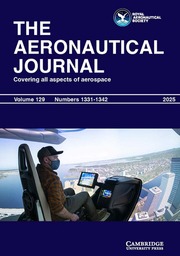No CrossRef data available.
Article contents
A supervised machine-learning approach for turboshaft engine dynamic modeling under real flight conditions
Published online by Cambridge University Press: 03 July 2025
Abstract
Rotorcraft engines are highly complex, nonlinear thermodynamic systems operating under varying environmental and flight conditions. Simulating their dynamics is crucial for design, fault diagnostics and deterioration control, requiring robust control systems to estimate performance throughout the flight envelope. Numerical simulations provide accurate assessments in both steady and unsteady scenarios through physics-based and mathematical models, although their development is challenging due to the engine’s complex physics and strong dependencies on environmental conditions. In this context, data-driven machine-learning techniques have gained significant interest for their ability to capture nonlinear dynamics and enable online performance estimation with competitive accuracy. This work explores different neural network architectures to model the turboshaft engine of Leonardo’s AW189P4 prototype, aiming to predict engine torque. The models are trained on a large database of real flight tests, covering a variety of operational manoeuvers under different conditions, thus offering a comprehensive performance representation. Additionally, sparse identification of nonlinear dynamics (SINDy) is applied to derive a low-dimensional model from the available data, capturing the relationship between fuel flow and engine torque. The resulting model highlights SINDy’s ability to recover underlying engine physics and suggests its potential for further investigations into engine complexity. The paper details the development and prediction results of each model, demonstrating that data-driven approaches can exploit a broader range of parameters compared to standard transfer function-based methods, enabling the use of trained schemes to simulate nonlinear effects in different engines and helicopters.
Information
- Type
- Research Article
- Information
- Copyright
- © Leonardo S.p.A., 2025. Published by Cambridge University Press on behalf of Royal Aeronautical Society
Footnotes
Now at: Weather Research, Danish Meteorological Institute, Sankt Kjelds Plads 11, 2100 Copenhagen Denmark


